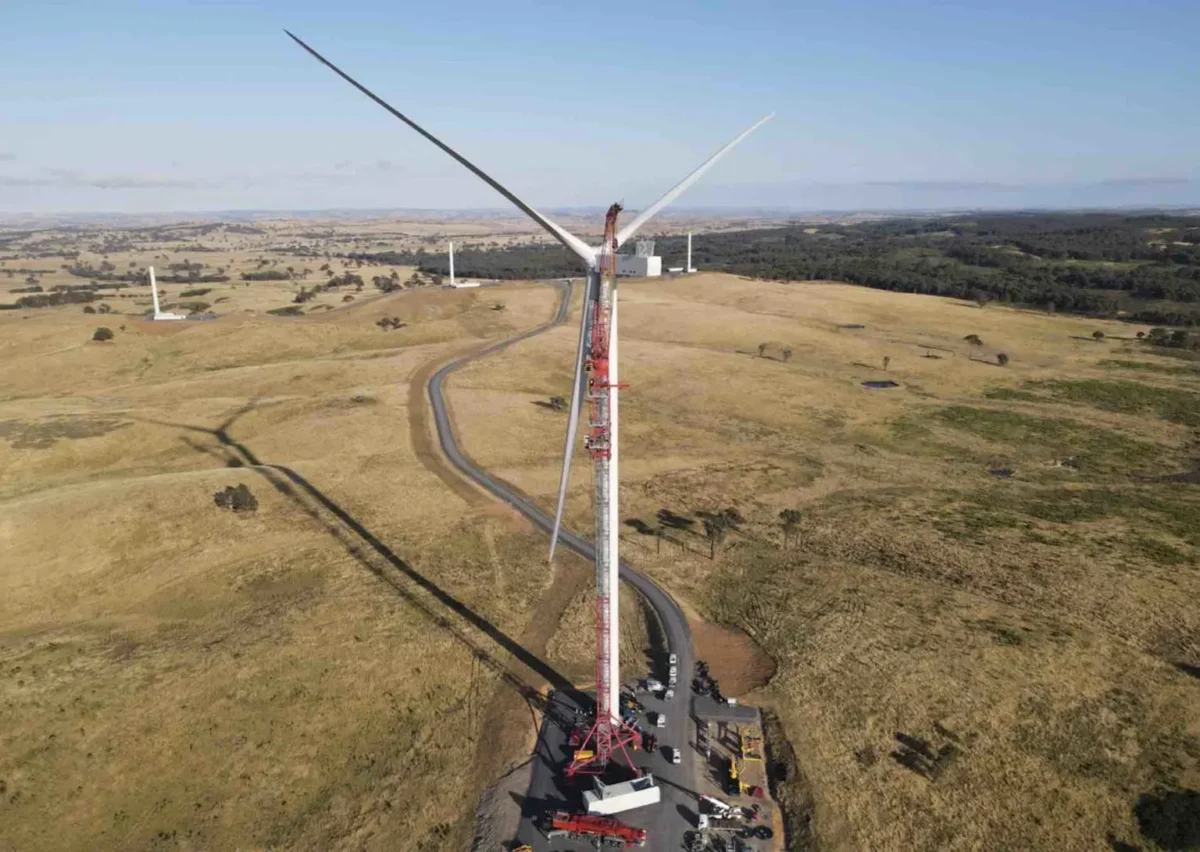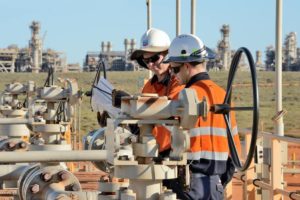The decision to further delay environmental approvals for a major wind farm proposed for Queensland’s Tablelands region has raised red flags for green groups, who say this is the third time the federal government has pushed out the deadline for a decision on the project, leaving the community and industry in limbo.
Ark Energy’s 294MW Wooroora Station wind farm, formerly known as the Chalumbin wind farm, has been dogged by controversy over its size and potential environmental impacts, although much of this has been whipped up by known anti-renewables agitators and politicians with no prior interest in conservation and no connection to the region.
As RenewEconomy has reported, Chalumbin wind farm was originally proposed as a 200 turbine project, but was whittled back to 95 and then 86 turbines, with a combined capacity of 602MW, to avoid sensitive ecological and cultural heritage sites.
In response to community concerns about the project’s proximity to national parks that form part of the Wet Tropics of Queensland World Heritage Area, and about the potential impact on the magnificent brood frog, masked owl and northern greater glider, Ark cut the project’s size again in September of last year, this time in half to 42 wind turbines.
The company also changed the project’s name, to reflect the name of the pastoral stations that will host it, and to remove any confusion – or misrepresentation – that that the project was being built on or near Chalumbin Hill, a sacred site to the original owners of the land, the Jirrbal Peoples.
“Some opponents took advantage of the former name to spread misinformation and make unsubstantiated claims about what kind of habitat and species are in the project area and therefore the environmental impacts of the development,” Ark Energy’s head of projects in Queensland Anthony Russo said at the time.
“The reality is the project is NOT within the World Heritage area and it is important that the project is represented accurately and the public have the facts.”
In reality, the wind farm is planned for development on land within two privately owned and largely cleared cattle-grazing properties, Wooroora Station and Glen Gordon Station. It is now limited to within the Wooroora Station.
And according to Jirrbal Peoples elder Brad Sam-Go, the establishment of the wind farm will enable the local indigenous community to access areas on that property currently not available to them.
“It will bring opportunity for our peoples and help improve land that is now covered in weed and pests,” he said in an open letter supporting development of the wind farm in July last year.
“The company has been working with us since 2019 to ensure they are respectful of Jirrbal Peoples’ connection to this area.”
In 2024, the project still hangs in the balance, waiting on a decision from the federal environment minister in accordance with the EPBC Act.
The Queensland Conservation Council (QCC) and Cairns and Far North Queensland Environment Centre (CAFNEC) said this week that while they welcome projects like Chalumbin getting serious government scrutiny of their inevitable environmental impacts, news of yet another delay to the decision was concerning.
“We absolutely don’t want to continue to see projects that have a large environmental impact being waved through, as we’ve seen time and again with coal and gas projects,” said Lucy Graham, director of CAFNEC, in a statement on Thursday.
“But the continued delays on this project are not good for the community, developers or our environment. We can’t afford to have such long decision times for renewable energy projects if development is going to proceed at a pace we need to prevent the worst impacts of climate change.”
The green groups also call on the renewables industry to learn from Ark Energy’s experience in Chalumbin and improve their siting and community consultation for projects – a call that echoes the findings of the Australian Energy Infrastructure Commissioner’s major review into community engagement, published this week.
“The renewable energy industry as a whole has an opportunity to learn lessons from this process. We hope that other developers take stock from what’s gone wrong at Chalumbin and are prioritising sites that have comparably lower environmental impact as well as best practice community engagement,” said Clare Silcock, Energy Strategist at QCC.
“Addressing climate change looks like urgently transitioning away from coal and gas to renewable energy and making sure development is in the right places, protecting our forests, wetlands and waterways that play a key role in soaking up carbon.”
There’s been strong acknowledgement within the renewable energy industry that there is a need to balance the rapid rollout of new projects – to support the phase-out of emissions-intensive fossil fuel projects – while preserving the natural environment and keeping communities on side.
Events of the last week have highlighted the new battlegrounds for the renewables sector, with protestors from regional Australia descending on Parliament House on Tuesday in opposition to new wind and solar projects – convinced they will ruin the environment and their livelihoods.
The protesters, many citing discredited claims that off-shore wind farms will harm whale populations, were clearly whipped up by Nationals and One Nation MPs acting in bad faith. The protestor’s environmental concerns are perhaps misguided, but many are earnest and reflect the potential for distrust to quickly spread throughout communities.
As the RE-Alliance’s Andrew Bray writes in RenewEconomy here, the renewables industry needs to proactively engage with local communities about planned developments to ensure areas of high biodiversity value are protected and to allay concerns about the impacts of new wind, solar and network infrastructure.
“There is a vacuum of public and trusted information on what renewables mean for people and our environment at scale. In this vacuum, speculation, misinformation and disinformation are thriving and undermining public confidence in renewables,” Bray writes.
The rush to a renewable energy future cannot occur on a ‘whatever it takes’ basis. Biodiversity, nature, and heritage cannot be sacrificed in the pursuit of the rapid transition to renewables – doing otherwise just provides fodder for bad-faith actors to breed community opposition.
On the flip-side, there is the question of whether the renewables industry is being asked to hold itself to a higher standard than that imposed on the fossil fuel industry.
Australia’s environmental laws currently create a perverse situation where proposed renewable energy infrastructure projects can be blocked on the basis of their potential environmental impacts – while at the same time allowing new coal and gas projects to be waved through.
The Environmental Protection and Biodiversity Conservation Act – Australia’s primary national environmental law – rightly protects areas of high natural value. Developments can be blocked under the Act if it will have a significant impact on Ramsar wetlands, water resources, and areas home to threatened and migratory species.
But it completely ignores the greenhouse gas emissions that may be produced by a new coal or gas mine, and perversely, ignores the severe consequences those emissions may have for Australia’s environment through worsening climate change.
State planning laws also consistently favour fossil fuels over the environment.
Newly appointed Queensland premier Steven Miles ramped up his state’s emissions reduction targets late last year, but his government has since proceeded to sign off on the development of multiple new coal projects.
Just this week, the Queensland government has issued approvals to Whitehaven’s proposed Winchester South coal mine, which is forecast to produce more than 17 million tonnes of coal and 567 million tonnes of greenhouse gas emissions over its operational life.
Advocacy group Lock the Gate slammed the decision, which will see more than 2,000 hectares of habitat cleared to make way for the coal mine.
“Central Queensland can have healthy ecosystems home to much loved species like koalas, greater gliders, and the Australian Painted Snipe, or the government can allow new coal mines to clear their habitats. It can’t have both,” Lock the Gate’s Dr Coral Rowston said on Wednesday.
“The Queensland Miles Government can reduce the state’s emissions, or it can have new coal mines. It can’t have both.”
The approval of the Winchester South coal mine follows closely behind the Queensland Government issuing approvals to the Vulcan South coal mine, which will involve the clearing of an additional 770 hectares of koala habitat.
The environmental benefits of ending the expansion of fossil fuel industries and transitioning our energy systems to renewables are clear. It is not the environmental villain that detractors are hoping to paint it as.
But the renewables industry needs to ensure that it is working to communicate these benefits to communities rather than stooping to the same level of malevolence as that shown by the coal and gas industry.










